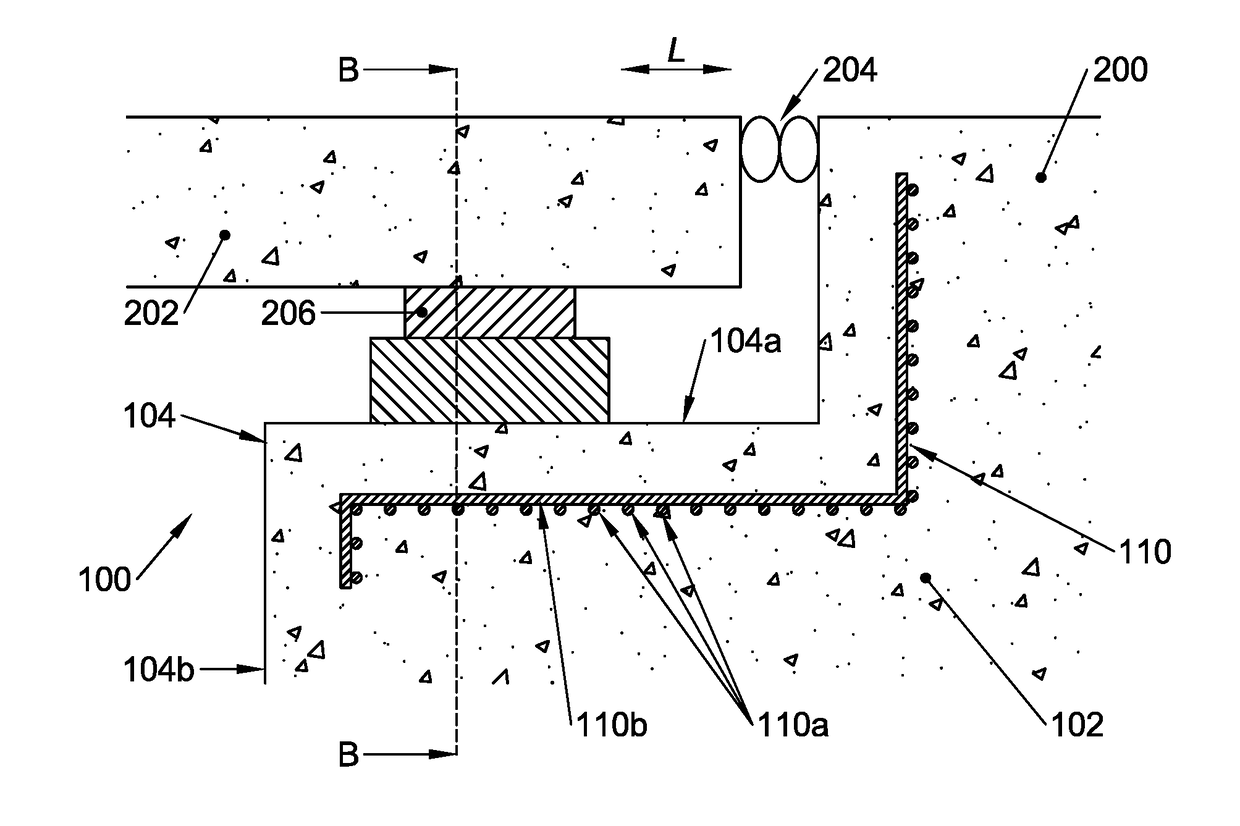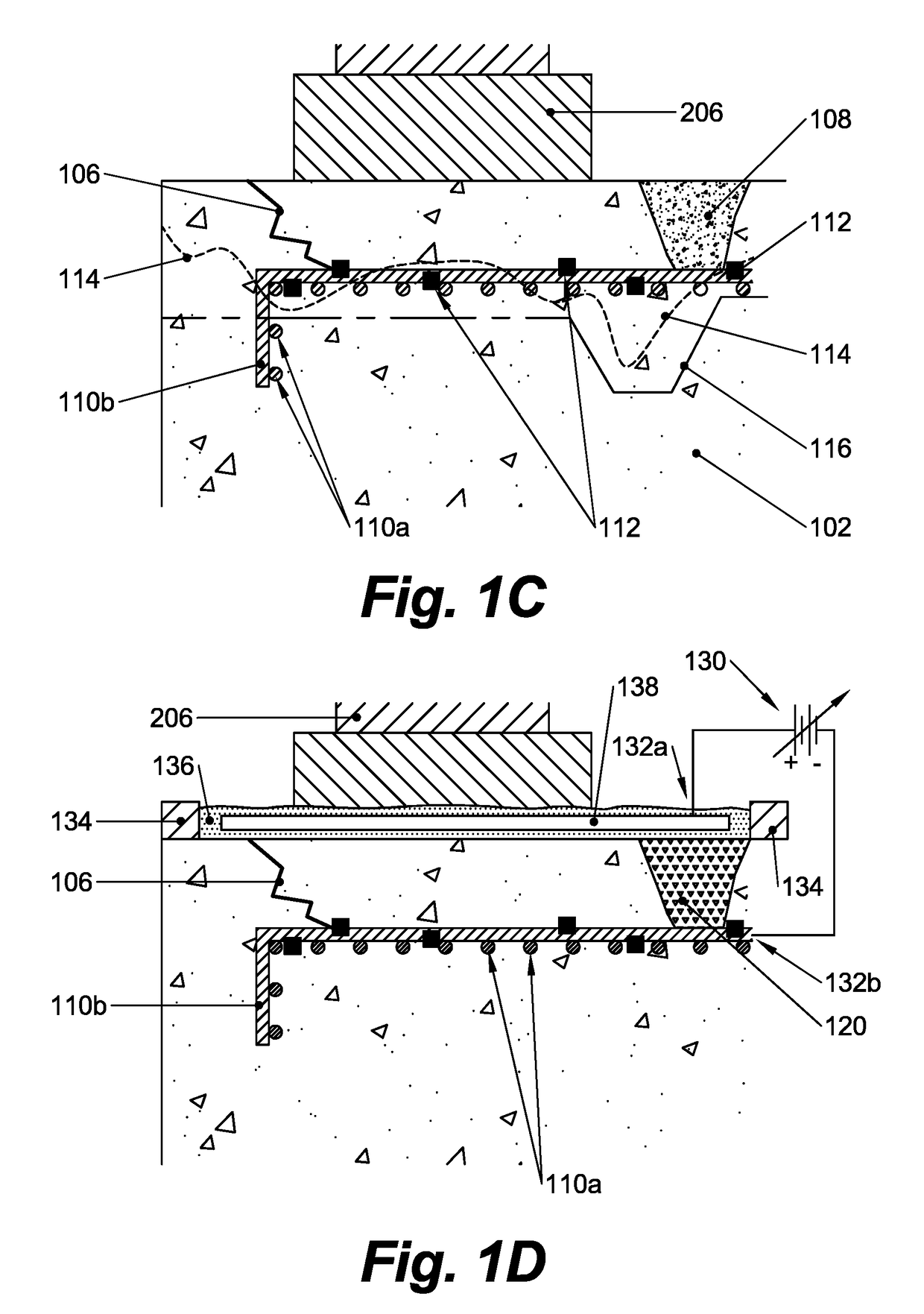Method of repairing steel reinforced concrete structure affected by chloride induced corrosion
a technology of chloride-induced corrosion and steel reinforced concrete, which is applied in the field of method of repairing steel reinforced concrete structure, can solve the problems of inherently expensive permanent treatment, inability to predict the progress of technology, and failure of conventional repairs,
- Summary
- Abstract
- Description
- Claims
- Application Information
AI Technical Summary
Benefits of technology
Problems solved by technology
Method used
Image
Examples
case i
The first case features a steel reinforced structure whose rebars display wide spread corrosion initiation and pitting, but damage to the concrete of the structure itself is so far limited.
1.1—Background
[0024]As shown in FIGS. 1A-C, case I concerns a steel reinforced structure 100 in the form of a bridge, comprising a bridge abutment 200 of steel reinforced concrete, which supports a monolithic substantially concrete bridge deck 202. Leakage through an overlying expansion joint 204 has brought chloride containing water from de-icing salts (XD3 according to EN 206) onto the external concrete surface 104 of the abutment 200. Corrosion initiating chloride levels have penetrated into the concrete until slightly beyond the rebars 110 (the chloride front 114 is indicated in FIG. 1C), causing multiple corrosion pits 112 therein. About 1% of the total external surface 104 of the abutment 200 is affected by corrosion induced cracks 106 and spalls 108.
[0025]The owner has identified th...
case ii
eam of Support Pillar of a Bridge
The second case features a steel reinforced concrete structure whose rebars display wide spread corrosion and pitting at an advanced stage. As a consequence of the corrosion, the embedding concrete suffers from heavy spalling.
2.1—Background
As shown in FIGS. 2A-B, case II concerns a steel reinforced structure 100 in the form of an overpass, comprising two abutments 200, a support pillar 210 with a steel reinforced concrete cross beam 212 on top, and a two-part road deck 202, each part being supported by the cross beam 212 and a respective abutment 200. Leakage through an overlying expansion joint 204 has brought chloride containing water from de-icing salts (XD3 according to EN 206) onto the external concrete surface 104 of the cross beam 212. Corrosion initiating chloride levels have penetrated well behind the rebars 110, causing multiple corrosion pits 112 and heavy spalling 108 of the concrete 102. The spalling has affected more than half of the ve...
PUM
| Property | Measurement | Unit |
|---|---|---|
| DC voltage | aaaaa | aaaaa |
| distance | aaaaa | aaaaa |
| depth | aaaaa | aaaaa |
Abstract
Description
Claims
Application Information
 Login to View More
Login to View More - R&D
- Intellectual Property
- Life Sciences
- Materials
- Tech Scout
- Unparalleled Data Quality
- Higher Quality Content
- 60% Fewer Hallucinations
Browse by: Latest US Patents, China's latest patents, Technical Efficacy Thesaurus, Application Domain, Technology Topic, Popular Technical Reports.
© 2025 PatSnap. All rights reserved.Legal|Privacy policy|Modern Slavery Act Transparency Statement|Sitemap|About US| Contact US: help@patsnap.com



